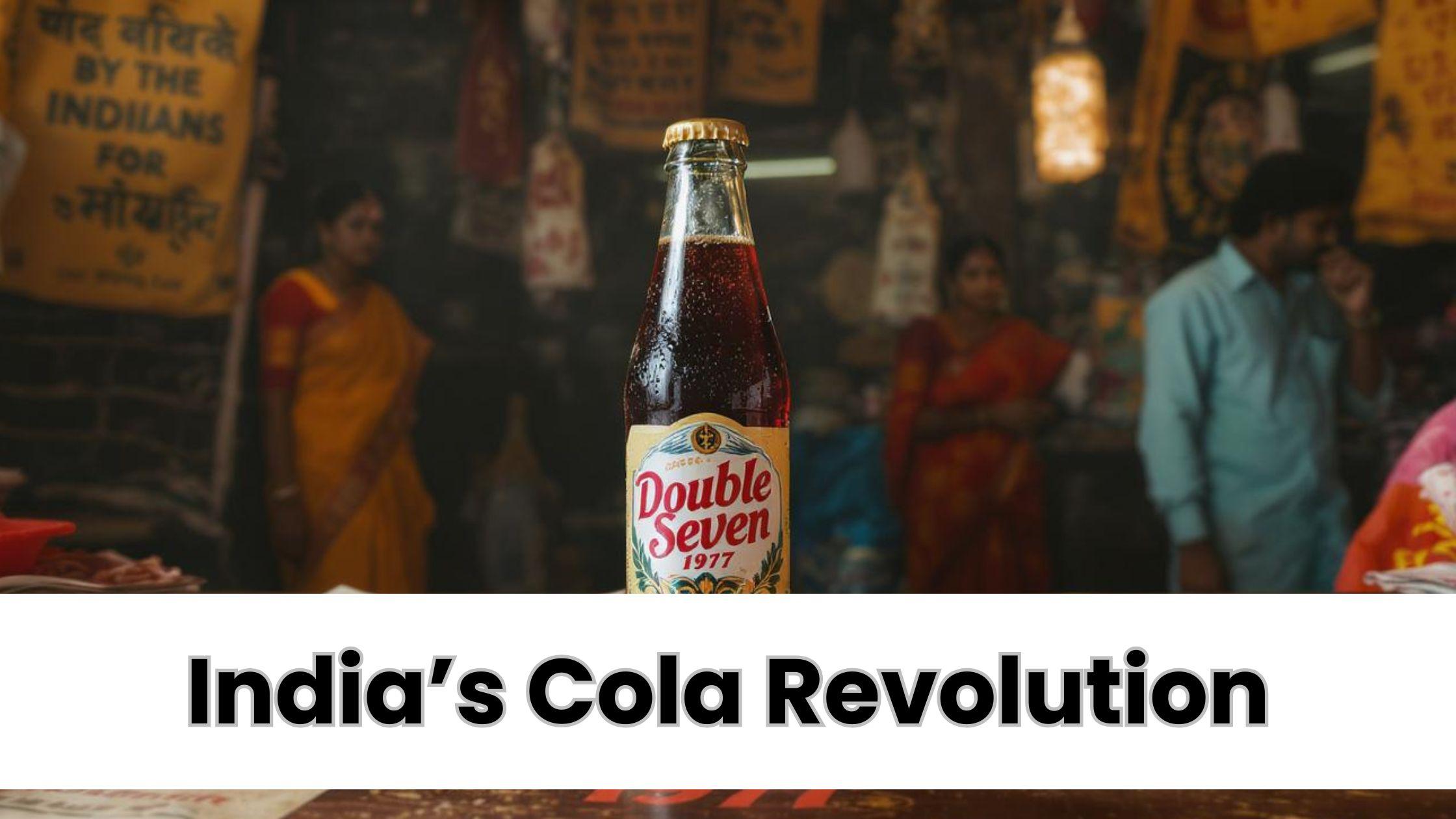The Janata Party's Cola: Double Seven's Brief but Bold Journey

In 1977, the Indian beverage industry experienced a dramatic shake-up with the launch of Double Seven, a government-backed cola brand. This marked a pivotal moment in India’s Cola Revolution, aimed at promoting indigenous products while reducing reliance on foreign brands. The Janata Party, led by Morarji Desai, expelled Coca-Cola from India for refusing to comply with the Foreign Exchange Regulation Act (FERA), which required sharing its secret formula. Double Seven emerged as the country’s patriotic alternative, symbolizing economic independence and national pride.
Government Initiative and Launch
Double Seven was produced by Modern Food Industries, a government-owned company, and unveiled at Pragati Maidan in New Delhi. The name “Double Seven” was chosen through a nationwide contest, reflecting the year of its launch and the public’s enthusiasm for change. The formula for the cola concentrate was developed at the Central Food Technological Research Institute in Mysore, designed to suit Indian taste preferences.
The government prioritized nationwide distribution to ensure accessibility in both urban and rural areas. This move was strategic and symbolic, signaling that India could produce its own cola to compete with international brands.
Marketing Strategy: Nationalism Meets Consumer Appeal
Double Seven’s marketing strategy combined consumer appeal with patriotic messaging. Advertisements highlighted the themes of self-reliance, portraying the brand as a choice aligned with India’s national interests. Slogans such as “For the good times” and “India’s own cola” captured public attention, reinforcing the idea that drinking Double Seven was a patriotic act.
Celebrity endorsements further amplified the message. Popular actors and public figures appeared in ads, linking the beverage to India’s cultural identity and industrial progress. This strategy made the cola a symbol of India’s post-Emergency resurgence.
Competition and Market Dynamics
Despite government backing, Double Seven faced stiff competition from domestic brands like Thums Up and Campa Cola. Thums Up, with its bold taste and aggressive advertising campaigns, attracted a loyal consumer base. Campa Cola also had a strong regional presence, further intensifying competition.
Double Seven’s initial struggle was primarily due to taste preferences and brand loyalty. While it enjoyed the advantage of symbolic patriotism, the flavor and carbonation profile did not match every consumer’s palate. Nonetheless, the brand’s government support allowed it to maintain a significant market share for several years.
Consumer Reception and Cultural Influence
Double Seven quickly became a cultural phenomenon. Consumers viewed purchasing the cola as a patriotic choice. Schools, offices, and households stocked it for celebrations, and local vendors promoted it as India’s own alternative to Coca-Cola.
The brand’s influence extended to media and pop culture. Newspapers, radio, and television highlighted Double Seven as a reflection of India’s industrial capabilities. For many, drinking the cola was not only a beverage choice but a way of participating in the larger story of India asserting its economic independence.
Operational Challenges
Despite its popularity, Double Seven faced several operational challenges. Production infrastructure occasionally struggled to meet demand, leading to supply gaps in smaller towns. Additionally, taste preferences varied across regions, and many consumers continued to favor Thums Up or Campa Cola for their stronger or more familiar flavors.
The brand also lacked Coca-Cola’s international marketing experience, which affected packaging, branding, and nationwide promotional strategies. These limitations made it difficult for Double Seven to fully establish itself in urban markets.
Political Changes and Brand Decline
The decline of Double Seven began in the early 1980s with the return of Indira Gandhi’s government. The administration was less inclined to support a brand tied to the previous government, resulting in decreased backing, reduced promotion, and eventual phasing out from the market.
Meanwhile, competing domestic brands strengthened their presence, and Coca-Cola remained absent until India’s economic liberalization in the 1990s. The shift in political support and evolving consumer preferences contributed to Double Seven’s gradual decline.
Coca-Cola’s Return and Industry Transformation
In 1993, Coca-Cola re-entered India, coinciding with the country’s economic liberalization. Alongside PepsiCo, Coca-Cola reshaped the soft drink industry with aggressive marketing, large-scale investments, and modern distribution networks. While Double Seven had disappeared from the market, domestic brands like Thums Up adapted and continued to thrive, maintaining strong consumer loyalty.
The Cola Revolution ultimately laid the foundation for a more competitive soft drink market in India. Double Seven’s brief yet impactful presence demonstrated that domestic brands could successfully challenge international giants when backed by strong messaging, government support, and patriotic appeal.
Legacy of Double Seven and India’s Cola Revolution
Double Seven’s story is remembered as more than just a cola—it is an emblem of India’s effort to assert economic independence and develop its domestic industries. While the brand no longer exists, its legacy lives on through cultural memory, consumer nostalgia, and the enduring success of brands like Thums Up and Campa Cola.
India’s Cola Revolution, led by Double Seven, represents a unique intersection of politics, culture, and commerce. It remains a reference point in discussions about consumer nationalism, government-backed enterprises, and the evolution of India’s beverage industry.
Read Full Article : https://bizinfopro.com/news/marketing-news/indias-cola-revolution-how-double-seven-replaced-coca-cola/
About Us : BizInfoPro is a modern business publication designed to inform, inspire, and empower decision-makers, entrepreneurs, and forward-thinking professionals. With a focus on practical insights and in‑depth analysis, it explores the evolving landscape of global business—covering emerging markets, industry innovations, strategic growth opportunities, and actionable content that supports smarter decision‑making.
- Art
- Causes
- Crafts
- Dance
- Drinks
- Film
- Fitness
- Food
- Games
- Gardening
- Health
- Home
- Literature
- Music
- Networking
- Other
- Party
- Religion
- Shopping
- Sports
- Theater
- Wellness




